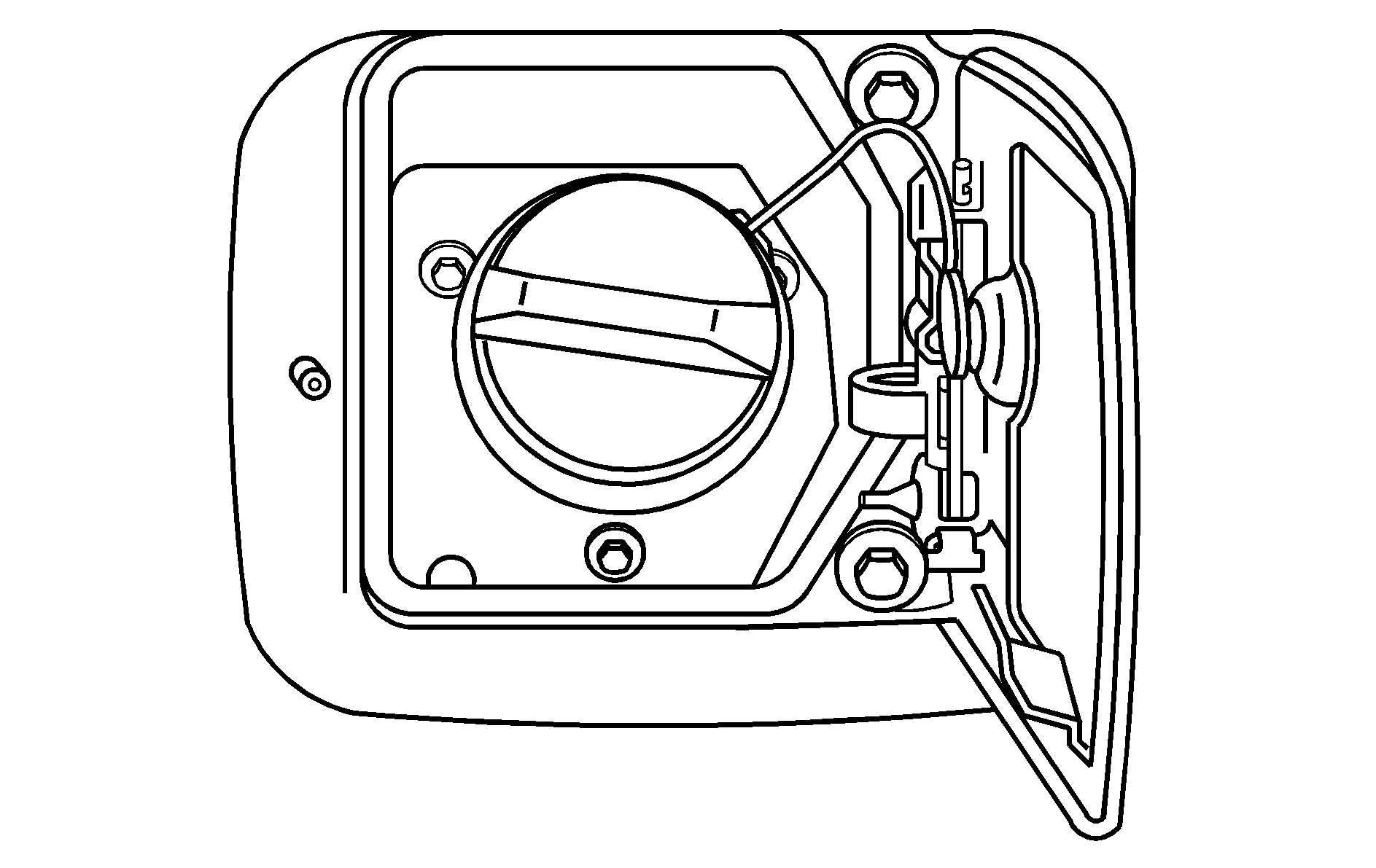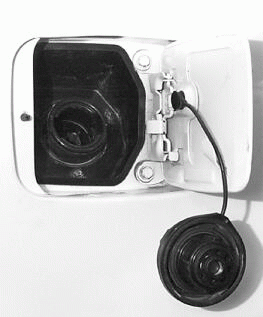Caution: Fuel vapor is highly flammable. It burns violently, and that can cause very bad injuries. Do not smoke if you are near fuel or refueling the vehicle. Keep sparks, flames and smoking materials away from fuel.

The tethered fuel cap is behind a hinged door on the passenger's side of the vehicle.
To open the fuel door, push inward on the forward edge of the fuel door until the rear edge can be pulled outward.

While refueling, hang the fuel cap by the tether from the hook on the fuel door.
To remove the fuel cap, turn it slowly to the left (counterclockwise). The fuel cap has a spring in it; if you let go of the cap too soon, it will spring back to the right.
Caution: If you get fuel on yourself and then something ignites it, you could be badly burned. Fuel can spray out on you if you open the fuel cap too quickly. This spray can happen if the tank is nearly full, and is more likely in hot weather. Open the fuel cap slowly and wait for any "hiss" noise to stop. Then unscrew the cap all the way.
Be careful not to spill fuel. Clean fuel from painted surfaces as soon as possible. See Cleaning the Outside of Your Vehicle .
When you put the fuel cap back on, turn it to the right (clockwise) until you hear a clicking sound. Make sure you fully install the cap. The diagnostic system can determine if the fuel cap has been left off or improperly installed. This would allow fuel to evaporate into the atmosphere. See Malfunction Indicator Lamp .
The Check Gas Cap message will appear on the Driver Information Center (DIC) display if the fuel cap is not reinstalled properly. See DIC Warnings and Messages for more information.
Notice: If you need a new fuel cap, be sure to get the right type. Your dealer/retailer can get one for you. If you get the wrong type, it may not fit properly. This may cause the malfunction indicator lamp to light and may damage the fuel tank and emissions system. See Malfunction Indicator Lamp .
